This week at our staff meeting, our colleagues at LNS and the Learning and Engagement team at deCordova spoke about how we build empathy in our community. We named curiosity, relationships, and familiarity among many tools central to this process. When we are curious about someone and become familiar with them, it becomes harder to cast judgements, to “other” them, and to create distance. We spoke about how developing relationships with the artists who have work on exhibition leads us all to develop empathy.
How might we develop a relationship with someone we have not met?
How can we understand an artist?
We decided a first step to understanding an artist could be to understand how they play. What materials do they use and what do they create? This week, in small groups, we traveled to the museum to look closely at Sheila Pepe’s work. Pausing on the stairs, we noticed the first evidence of her sculptures. We asked,
What materials did she use?
How did she use them?

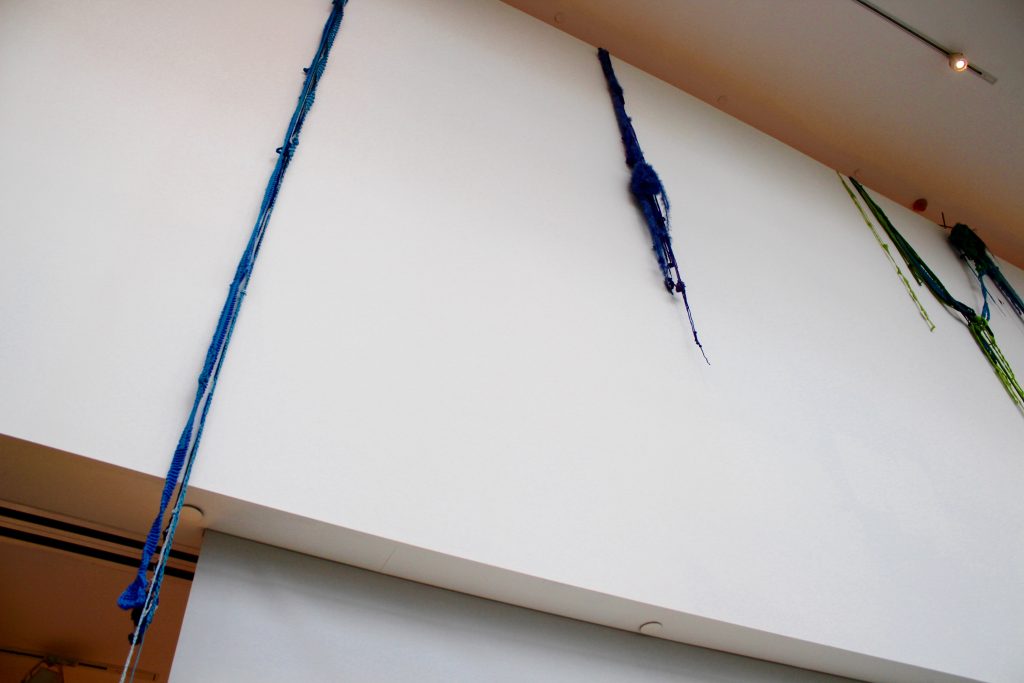
Children excitedly began naming what they saw,
giving new vocabulary to the work and its components.
She makes colors and makes braids.
They get patterns like if you twist them up it makes stripes or polka dots.
It looks like a red ghost.
Yarn ripped. Like knitting stuff.
It looks so soft.
That one looks like a decoration at a birthday party. Like the flags.
Feathers.
It’s someone’s birthday here.
It’s like a pathway that curves and twirls.
Taking her stance, children messed about. Within their sketchbooks, we placed a provocation: on the top of a page we hung some string to echo the way the artist's work hangs over the wall. Then, like her materials, the strings flow to the other side, inviting children to create their own vision of how these materials might be arranged over the "wall."
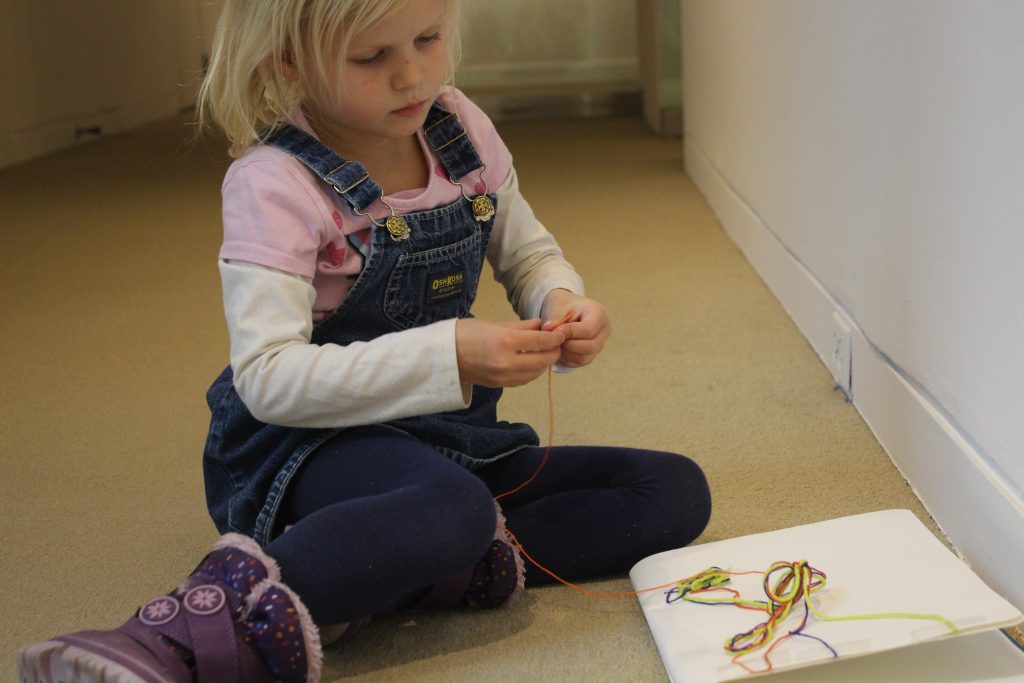
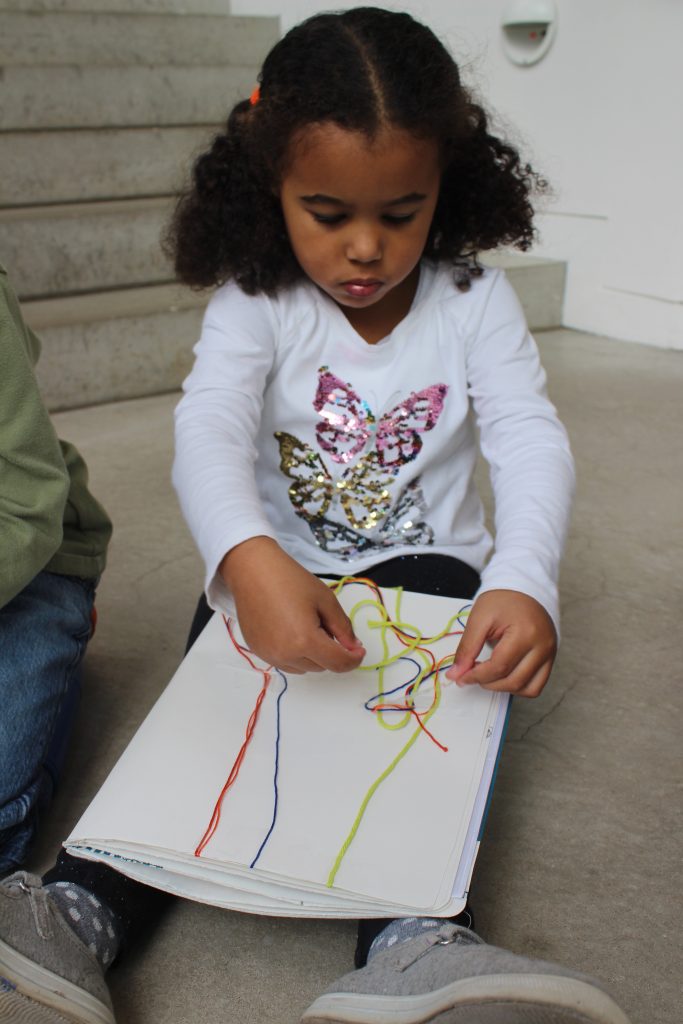


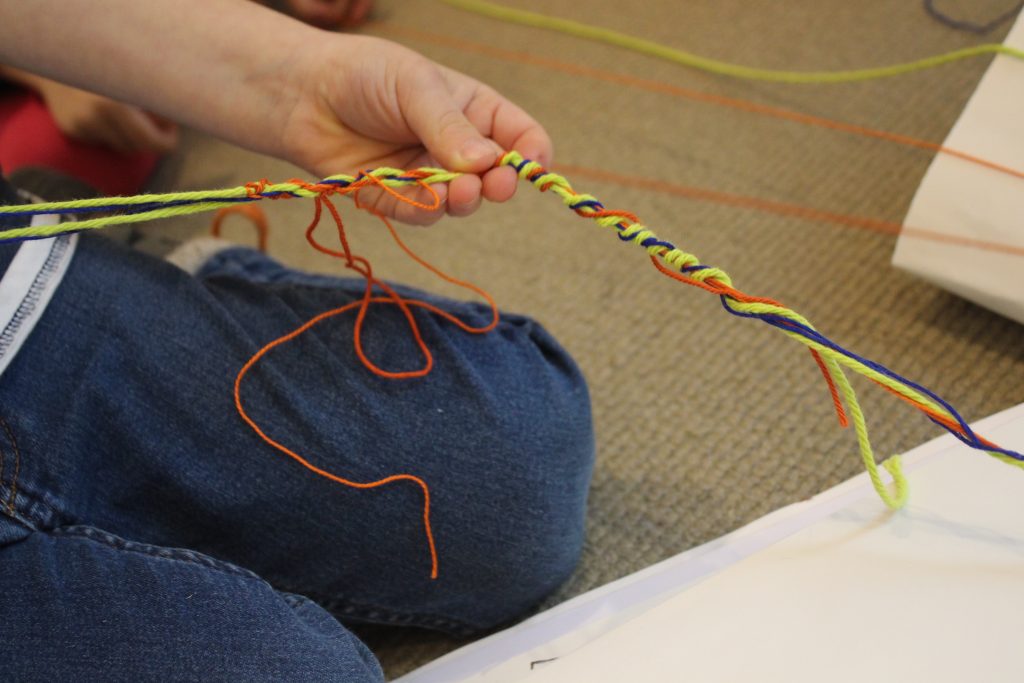
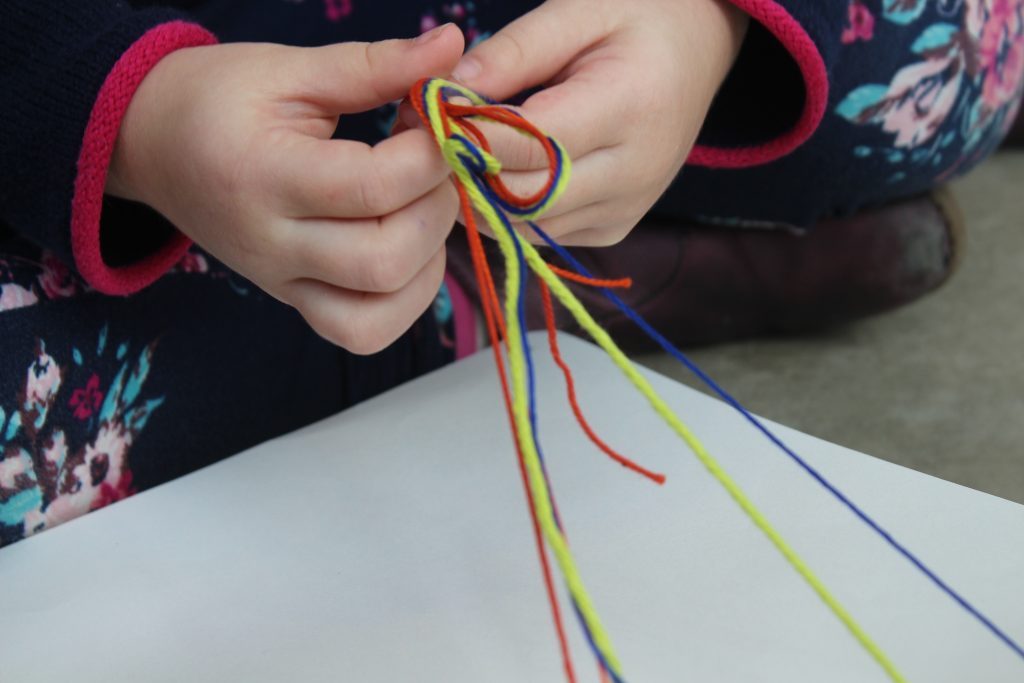
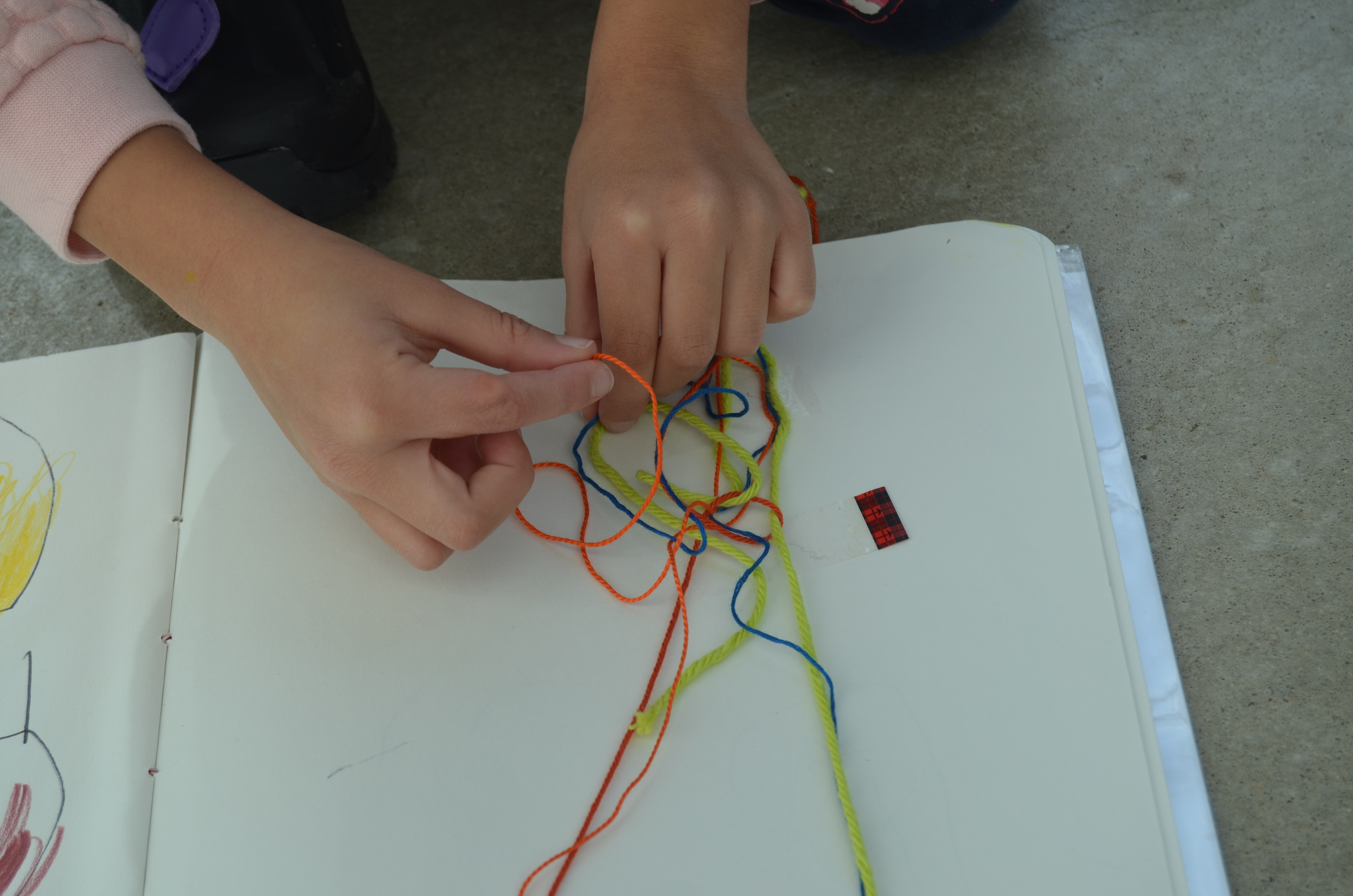
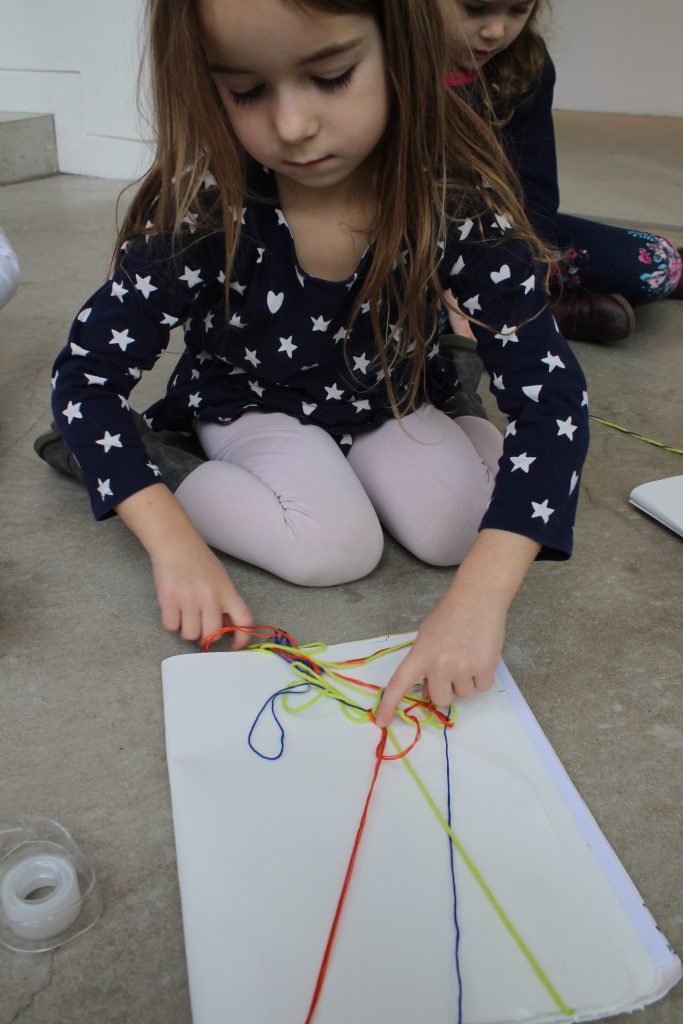
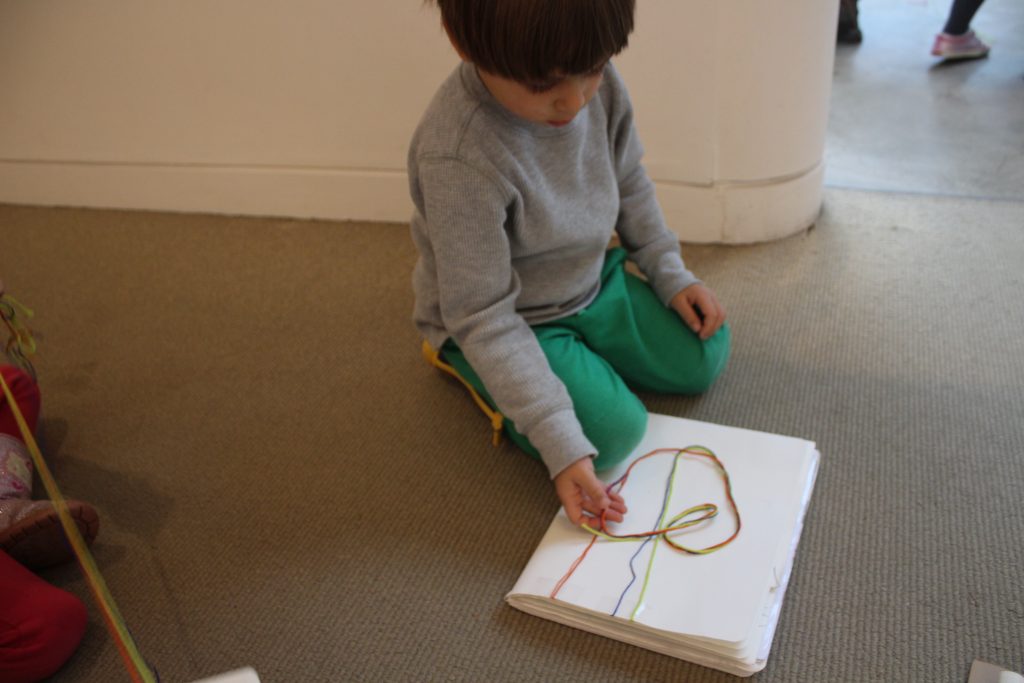
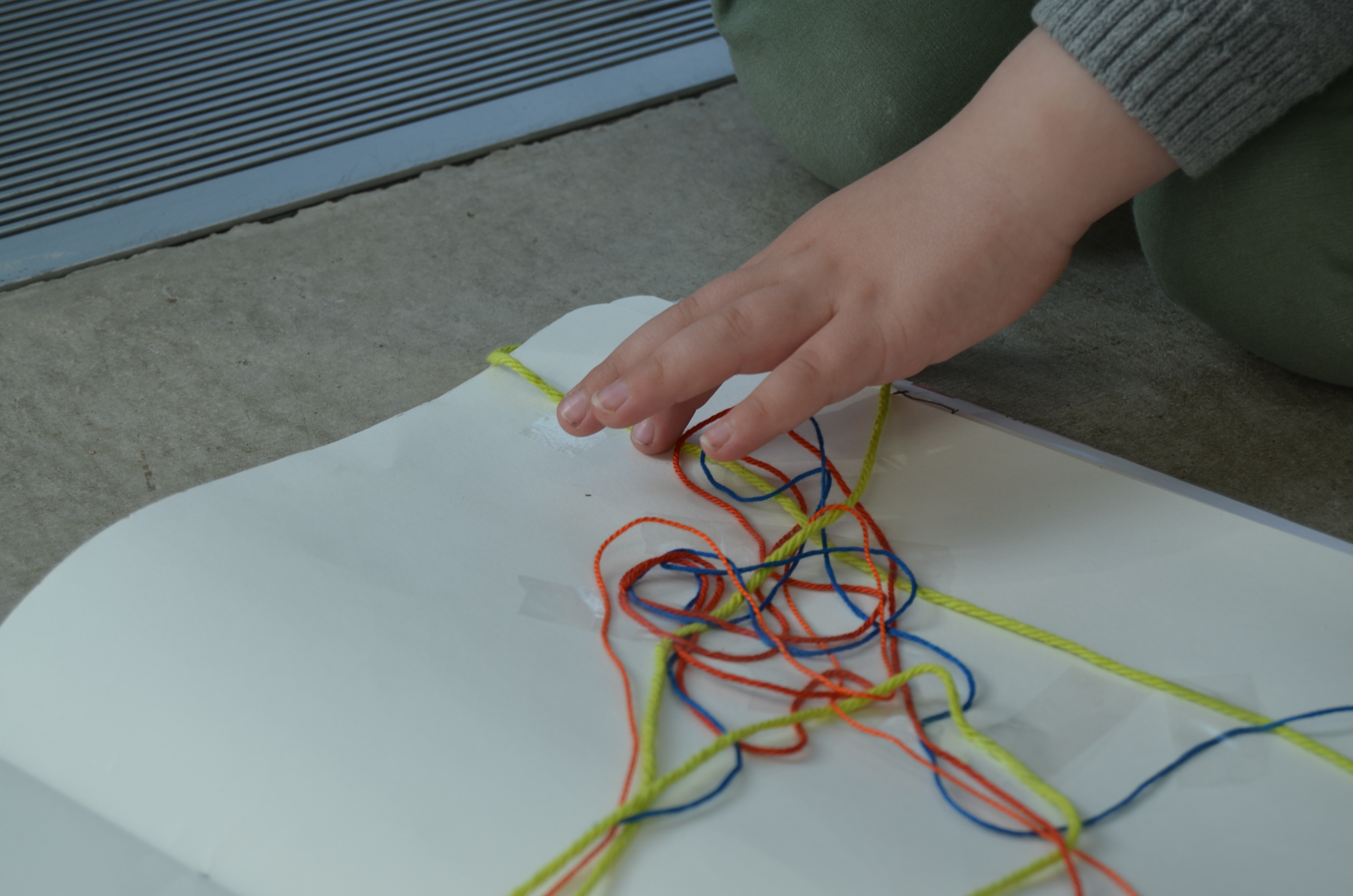
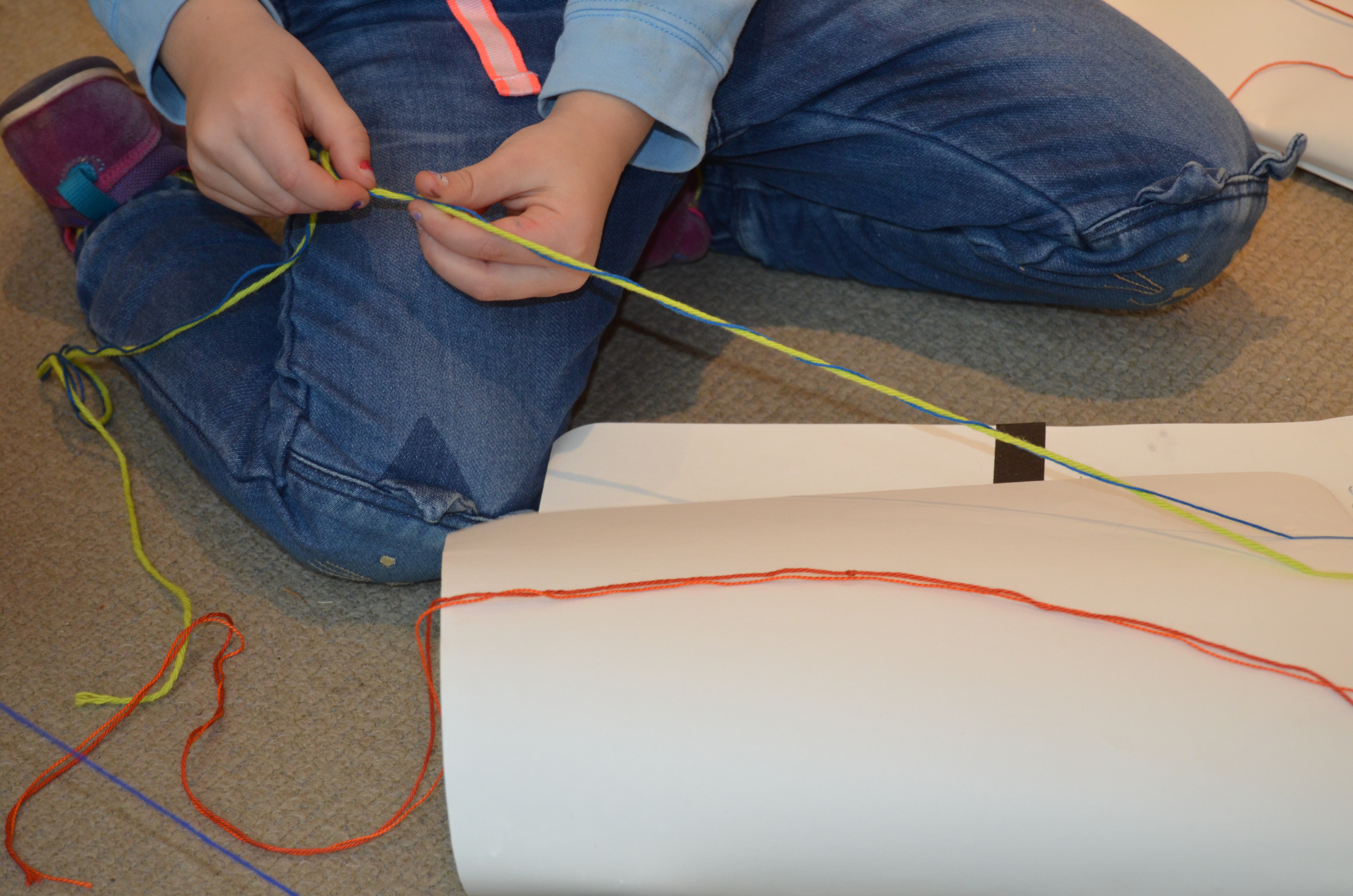
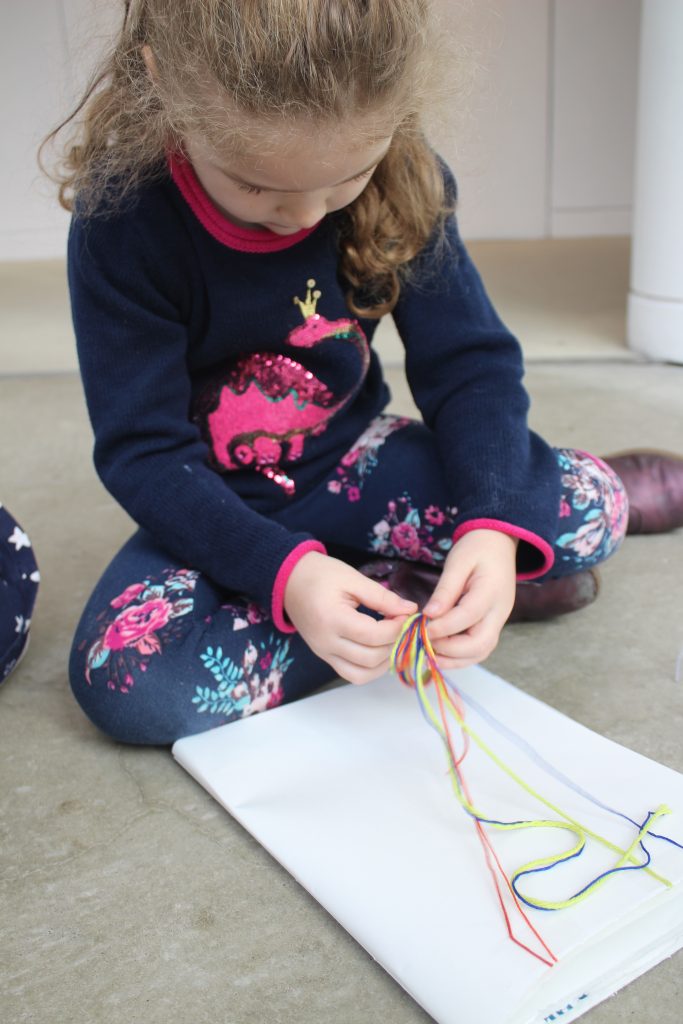
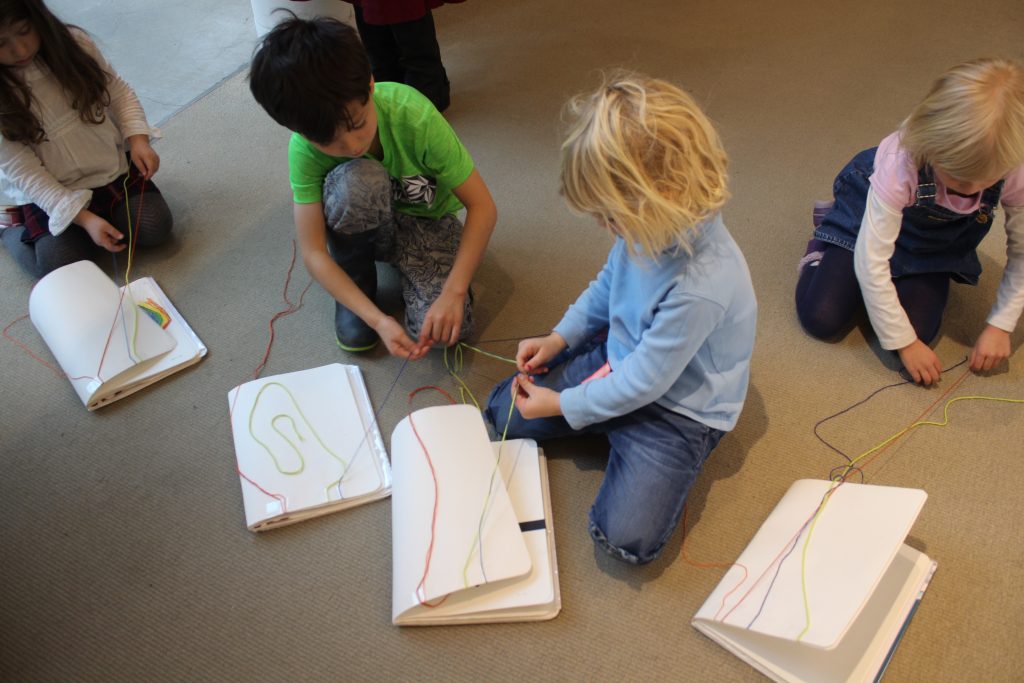
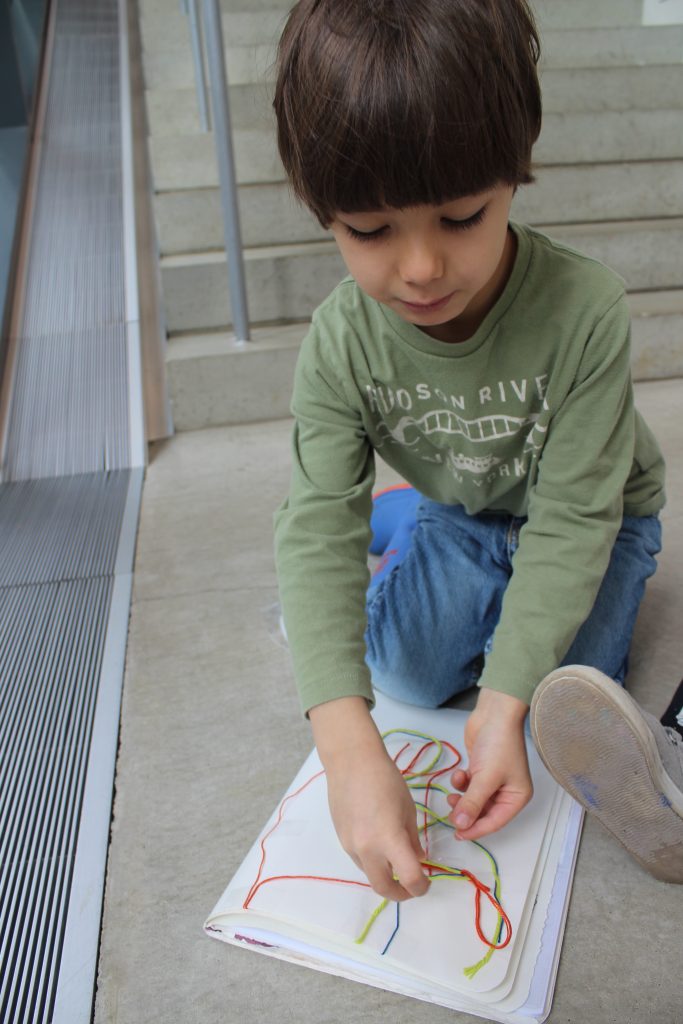
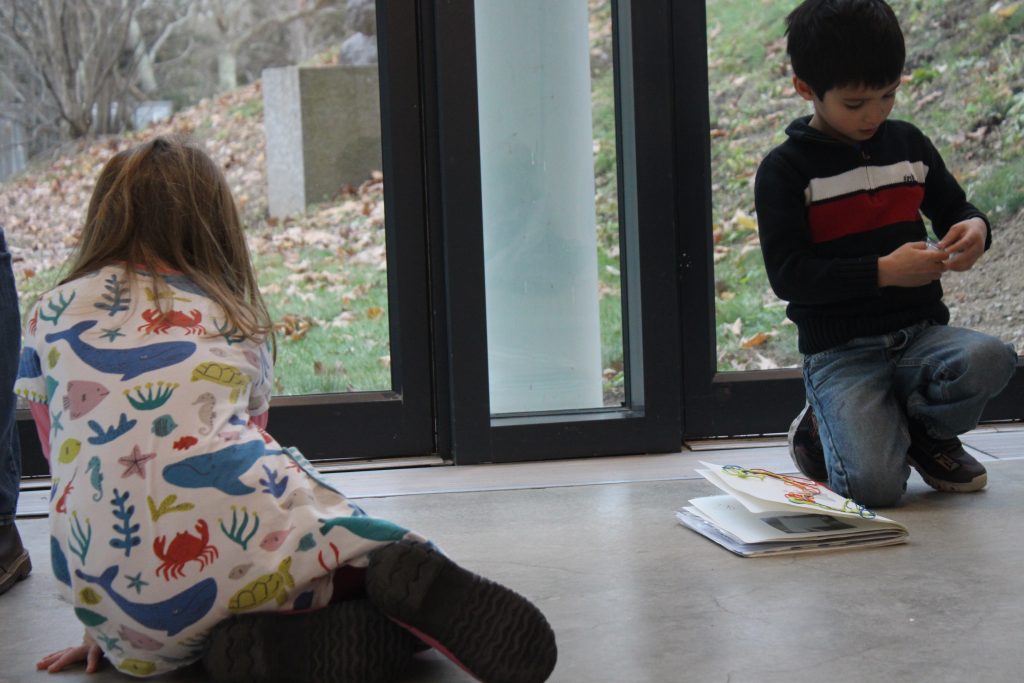
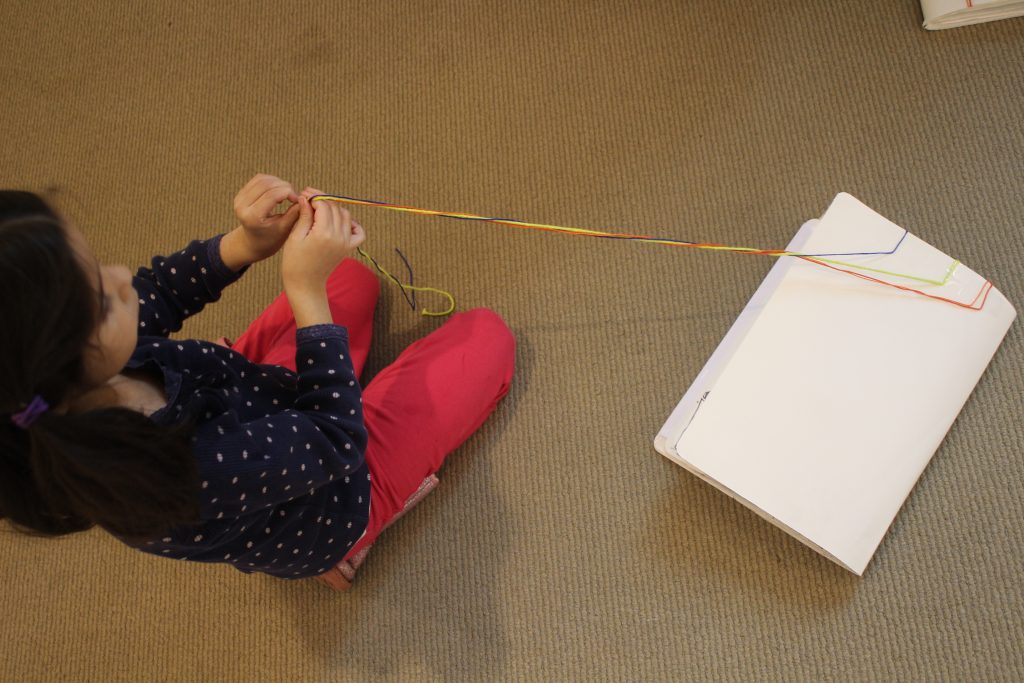
Look what I did!
Woah, that looks great, Sofia!
I could make a braid with one of them.
I’m gonna braid and make a decoration. A braid decoration.
Josef, what are you doing?
I’m braiding, that’s what I’m doing.
I’m pretending to be Sheila Pepe right now.
These are looking so different but each beautiful.
It gets cooler and tapier.
Feel these two bumps.
That looks like a sock.
That looks like a loop.
A big circle. Wonder if I did this? I’m going to tape it.
Look, I’m drawing! I drew a spiral scribble. It reminds me of splatter paint. It reminds me of fibers and yarn.
Everyone’s thinking of my work!
Mine might be as long as Sheila Pepe’s!
We both love each other’s pattern!
I practice doing it.
I have to untangle.
Then, we walked up the stairs to see the other side of the wall. In this way, we slowed the experience down, building excitement and wonder. Entering the gallery, children were in awe. Look what Sheila Pepe created! We extended our questioning as we encountered her work in stages.
What materials did she use? How did she use them?
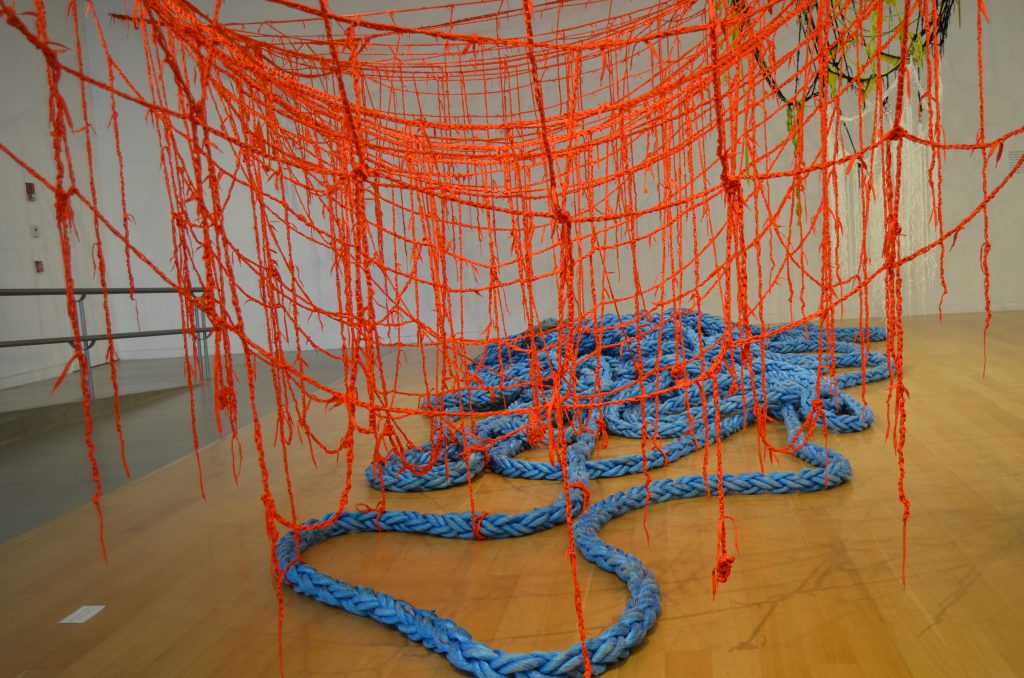
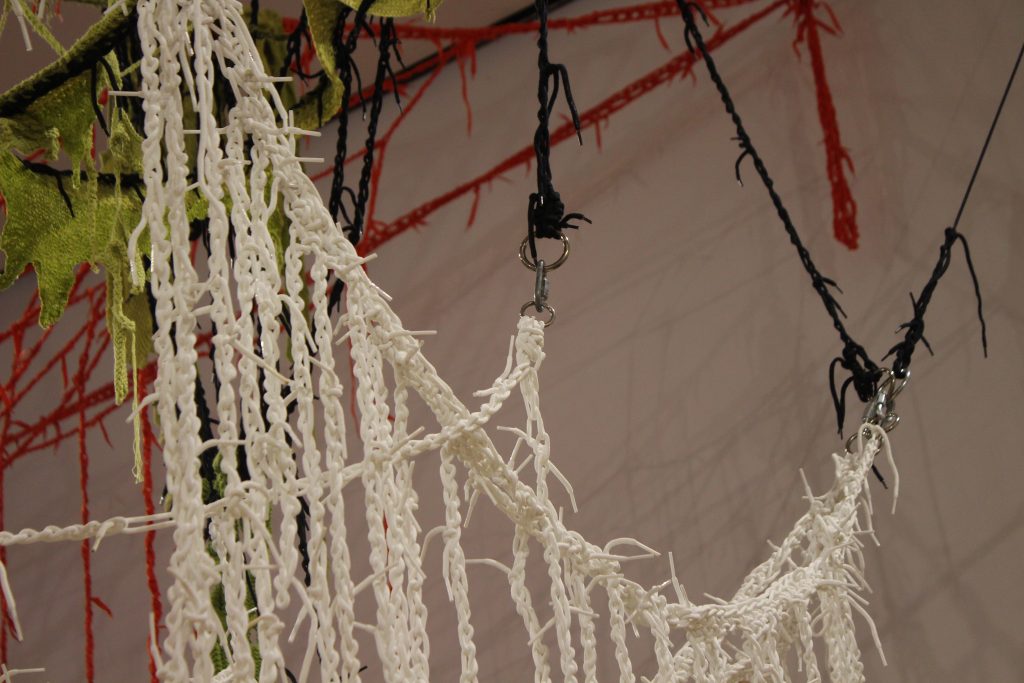
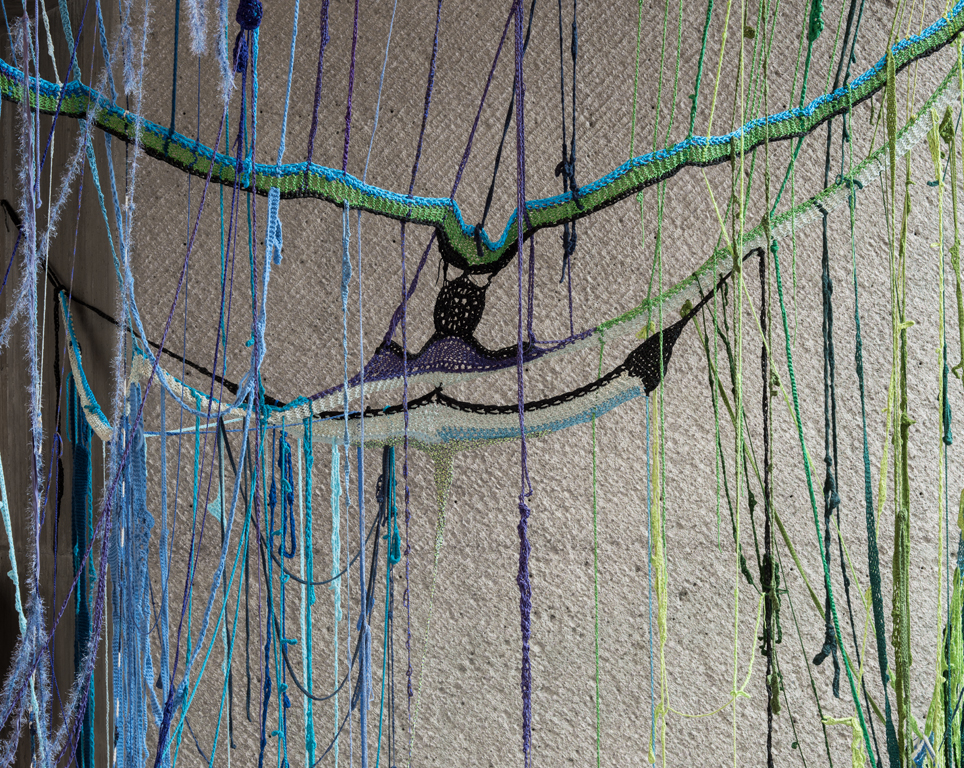
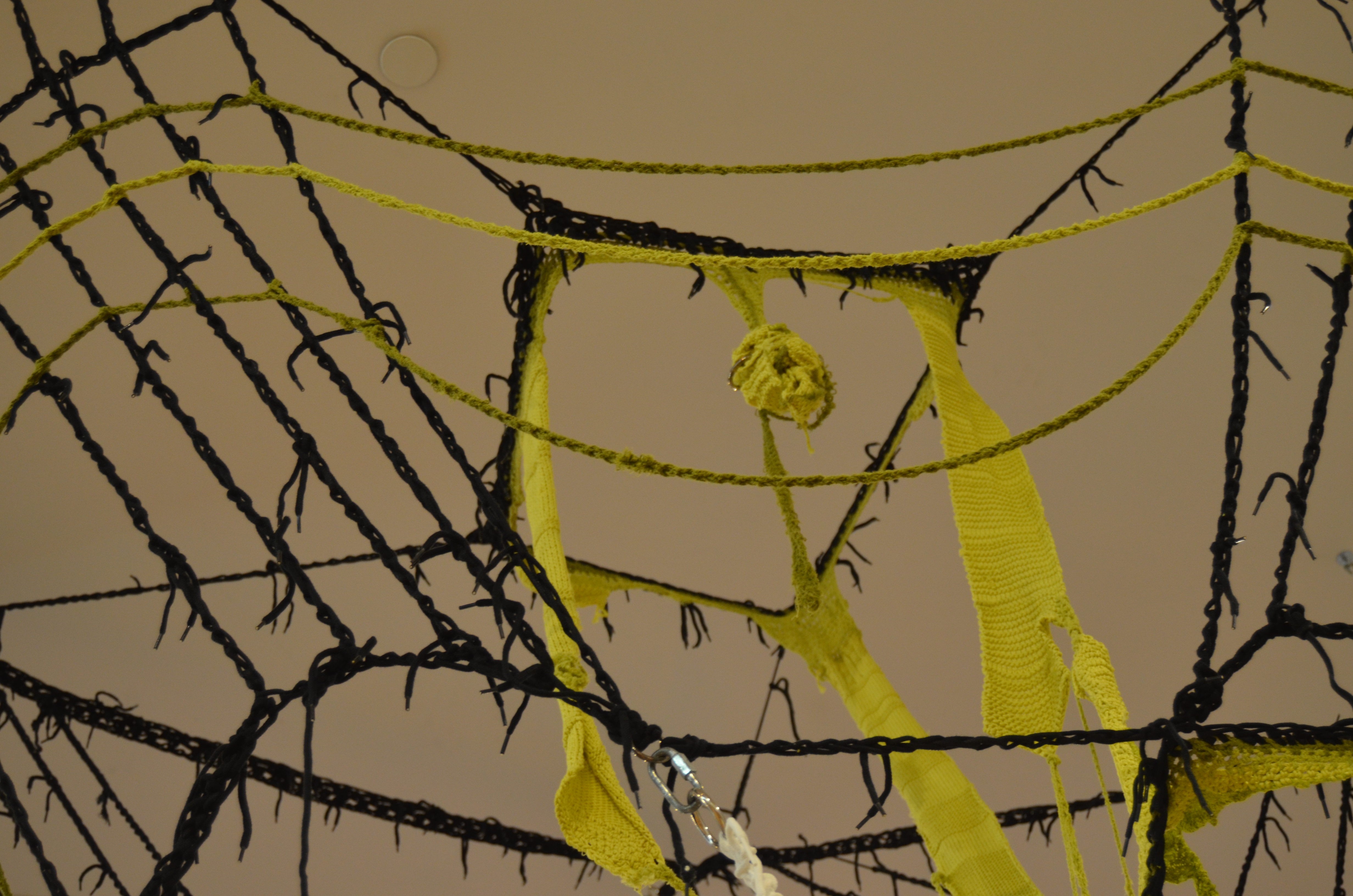
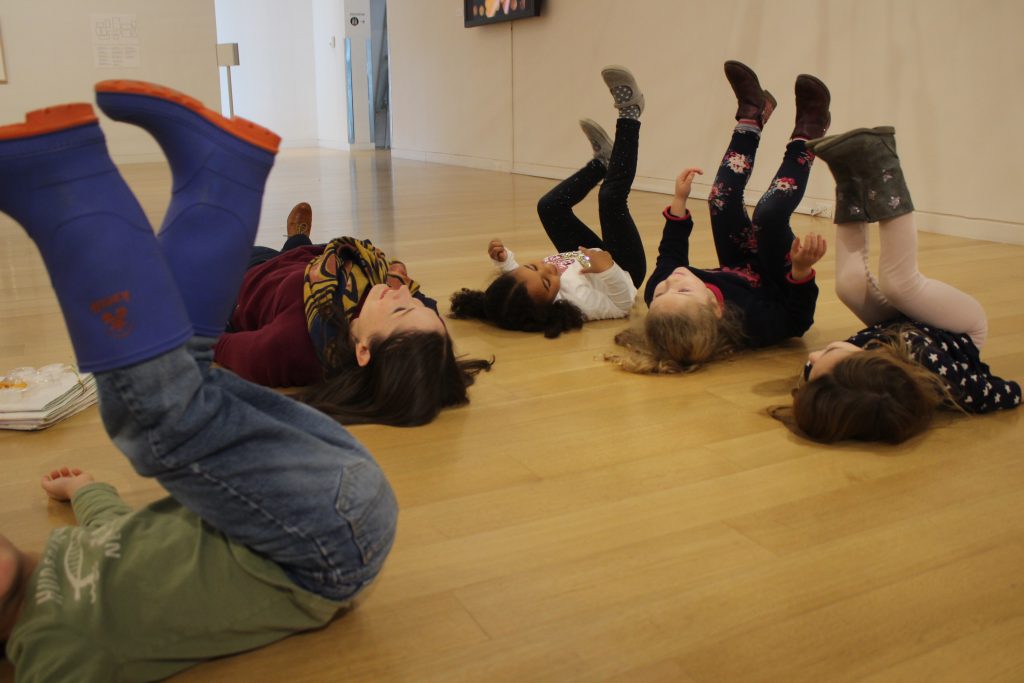
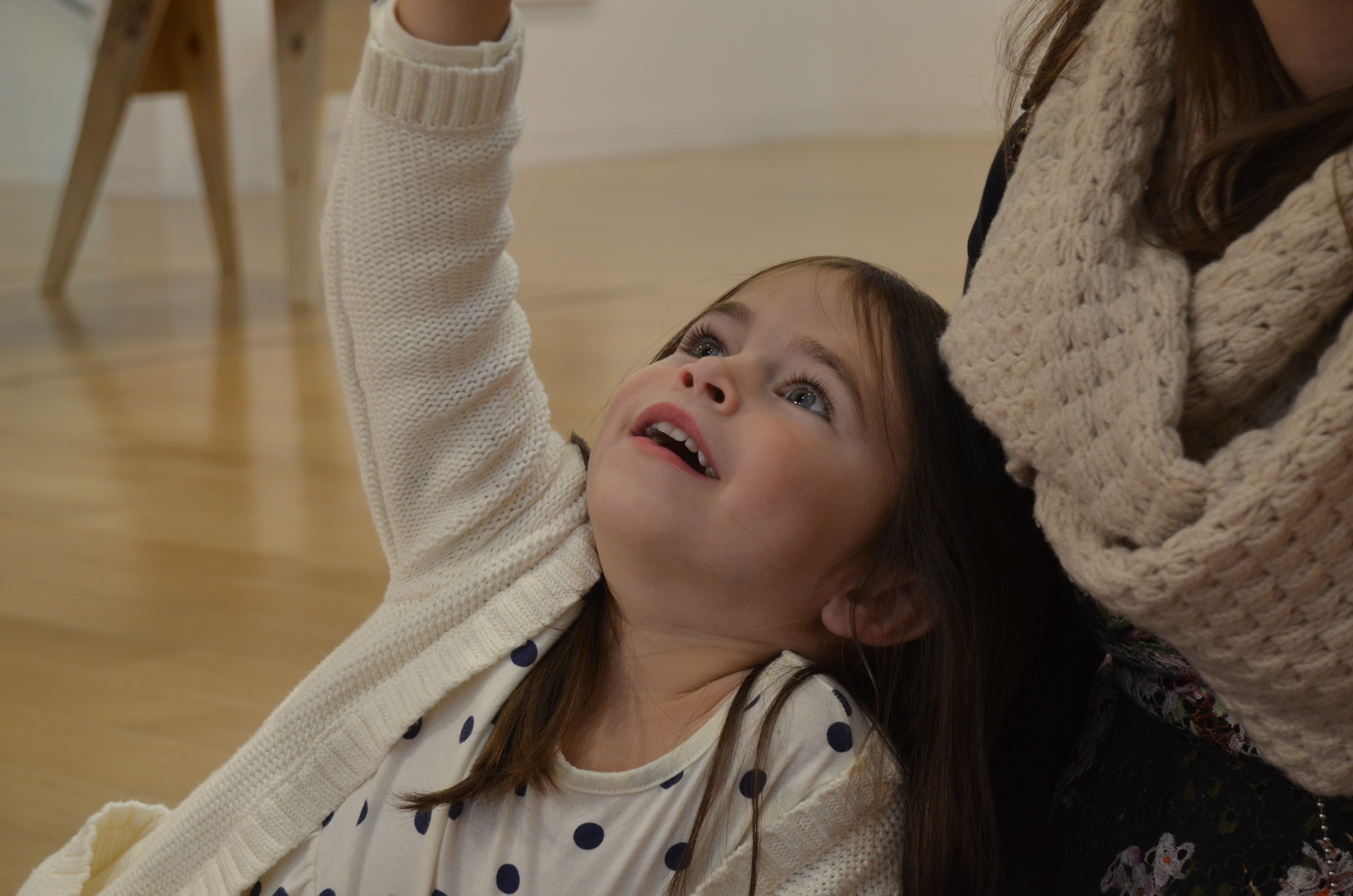
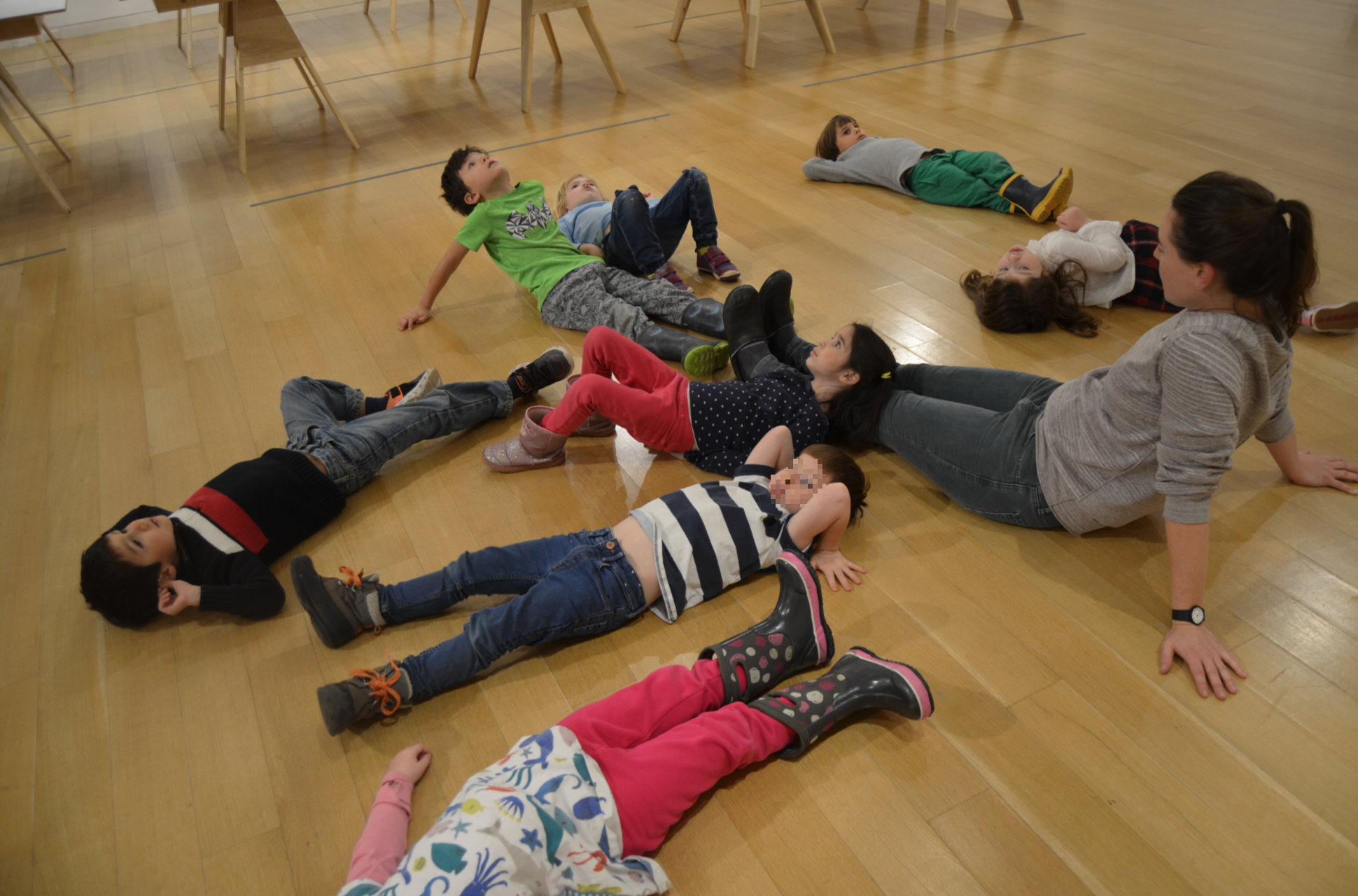
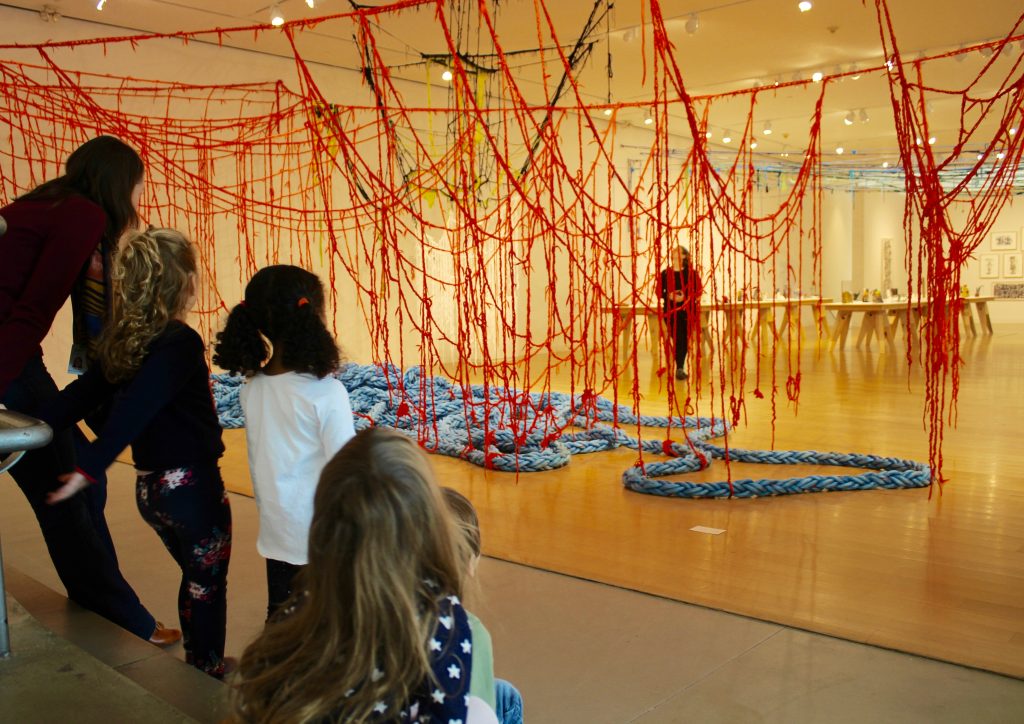
I see string, like a roll, like a ball.
The connectors!
It looks like you could climb it.
It’s hanging from the wall and connected to that one!
I notice that my mommy braids my hair like that.
It’s kind of flipping and flipping.
It’s just going under.
Look how big that yarn is! Those are huge braids!
It’s a chain.
That’s a braid!
The blue yarn is different. It looks like a rope. It is a rope. But those are just little strings made together.
It looks like they’re together.
It looks like water. Water braided.
Down, up, down, up, down, up.
It looks like shoelaces. Because of the ends.
She used it (hanging) in a different way.
I see all the lines connecting out there!
There’s tape inside the yarn. I think it’s just tied.
There’s some orange in the blue. I see some rips in the blue.
It doesn’t look like our string. It looks like the same color.
And rings. Put them together.
She didn’t tape it. She ribboned it together. She tied knots in the ribbon.
It’s like rain coming down.
A big long braid to attach them. String or yarn.
The holes are attached and they’re flat.


